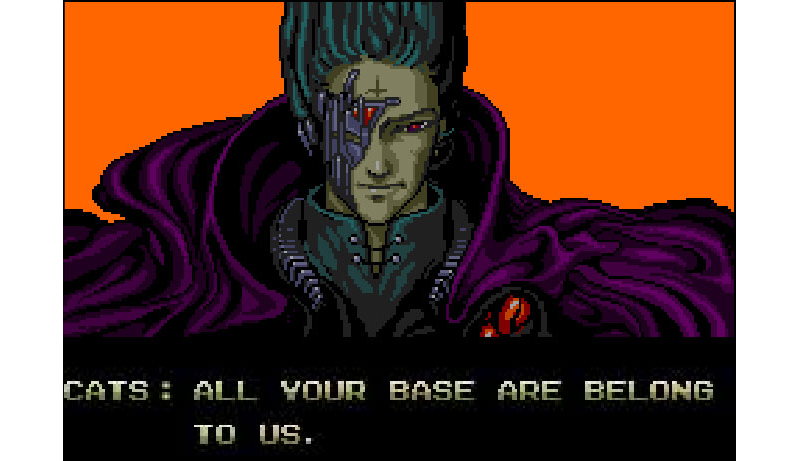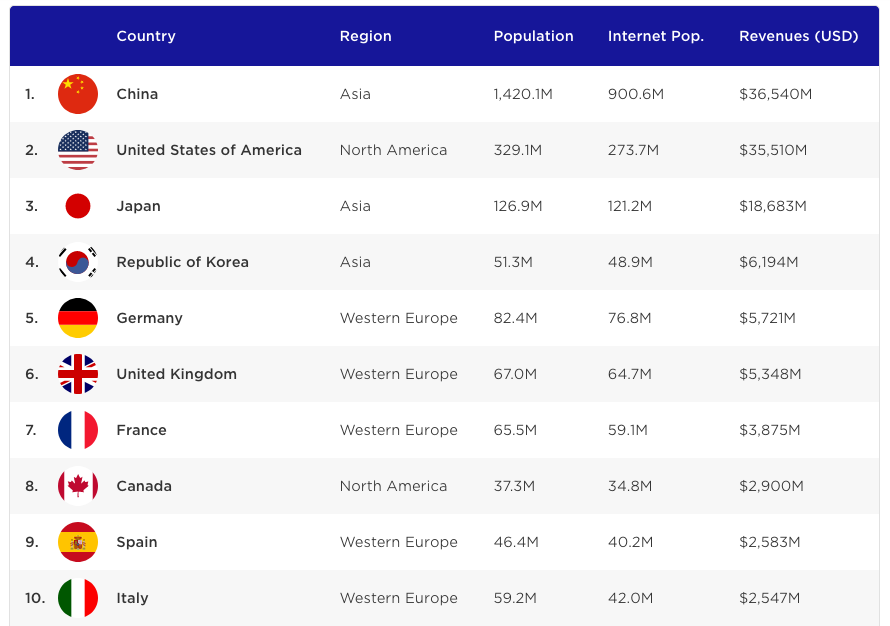Video games are easily one of the most global experiences available today.
We’ve seen the video game industry transform from games like Pong, with two players sitting next to each other, moving a jagged line up and down their screen, into massively multiplayer online (MMO) experiences like World of Warcraft, with players interacting in this living universe, all in the comfort of their own homes around the world.
And this isn’t just a niche little group on the internet. In fact, the European Mobile Game Market estimated that there were more than 2.5 billion - yes, with a "B" - gamers in the world.
That's a lot of gamers.
With smartphones and computers so pervasive, almost anyone with an internet connection can play the latest titles, and players around the world from different cultures can now all share the same amazing gaming experiences.
As the game developer, how do you ensure that all of these gamers around the world have access to the amazing experience you've been working on so passionately?
Localization can help you accomplish this task! Video game translation and localization can seem daunting at first, but that's exactly why we're here to help.
In this two-part series, we will cover the ins and outs of game localization: what is game localization, why you need to localize your game, and even how to begin your localization process.
What Is Video Game Localization?
What is “localization,” you ask? Localization is the process of adapting a piece of content's full meaning for a new region, including translation, associated imagery, and cultural elements that influence how your content will be perceived.
When it comes to games, the main goal here is to preserve the tone, feel, style, and user experience the game provides. Depending on the type of game, there are several different elements that would need to be translated:
- UI information including player info stats, location names, item names, map names, non-player characters’ (NPCs) names
- Any in-game dialogue between characters and any prompts from NPCs
- Quest text and related information to guide players through the world
- In-game announcements, like in multiplayer games
- Prompts and instructions on how the player will interact with the world
- Subtitles for any dialogue throughout the game, particularly in cut-scenes
If there's anything that will break a player's immersion into the game, it would be a bad translation. We wouldn't be talking about game localization if we didn't bring up the infamous "All Your Base Are Belong To Us" mishap.
Perhaps one of the first memes, "All your base are belong to us," is actually a translation error from the opening cutscene of the European release of Zero Wing in 1992.

I love this example for two reasons. One, it's just a hilarious relic of internet history. And two, it perfectly highlights the importance of proper translation and localization.
A literal translation was not the right path to take here, with a proper idiomatic translation reading as "we have taken over all of your bases."
It isn't enough to just throw your game's script into a free machine translation tool and call it a day (that’s where transcreation and quality assurance come in!).
Localization involves a bit more care. However, the rewards will very much be worth the effort.
The Popularity of Video Games Around The World
Don't just take our word for it, let the numbers speak for themselves. There is an amazing opportunity to grow your game's community around the world, with a large number of players engaging outside of the U.S.
Just looking at the top countries around the world playing video games, organized by revenue, we already see several different languages, including Chinese, English, Japanese, Korean, German, French, Spanish, Italian:

China is clearly outspending the rest of the world when it comes to video games. That alone should paint the picture that China is a market worth entering if your brand is looking to expand revenue opportunities.
Of course right behind China is the U.S., but just under that are Japan and Germany, and we see Korea and France also within the top 10.
The conclusion is fairly clear with just this one statistic: there are massive revenue opportunities for video games around the world, with multiple languages in the top 10 revenue centers alone.
And these aren't necessarily just one-time buyers. As of August 2017, Valve reported that Steam (the largest PC gaming ecosystem) had a worldwide count of 67 million monthly active users. Meaning, these users will continue to come back to your game time and time again, potentially spending more on in-game transactions and downloadable content.
But, this doesn't just mean that you can ship a game into a new market. That's exactly where localization comes into play.
Why Video Game Localization is So Critical
The benefits of localizing your game can be summed up with one main answer: increased revenue opportunity.
However, there are even more nuanced benefits that apply to localizing any content, but video game content in particular.
1. Expand Your Audience
We've already touched on this a bit, but the video game market around the world is huge. And what's equally compelling is that this market is only going to continue to grow.
As mentioned above, PC gaming has seen over 60 million monthly active users. But what's also important to recognize is that PC Gaming is seen as the smallest, and slowest market -- increasing only +4.0% year over year, compared to 45% growth for mobile gaming.
So -- if the smallest market has 67 million global, active users, that original number of 2.5 billion players around, on all platforms combined, begins to make a bit more sense.
2. Introduce New Revenue Streams
As we expand our audience, we of course then expand the opportunity for new revenue streams. And boy, is localizing an amazing way to maximize the potential of your game.
NewZoo also reported in 2017 that Asia Pacific reached a revenue of 51.2 billion US dollars, making them the largest gaming market in 2017.
China in particular covers 41% of the video game market revenue worldwide. Gameindustry.biz also noted in 2016 that Europe covered the second-largest revenue generated by both Free-to-Play and Pay-to-Play MMO games, covering 17.8% of the shares worldwide.
3. Adapt to Cultural Expectations
But to effectively expand your audience, and open up new revenue streams, your content must resonate with users. Localizing your game adapts that experience to the cultural expectations and norms for the global audience.
Localization enables your brand to adapt your game to these cultural expectations and standards to resonate and captivate players.
For example, in Germany, games cannot show any blood or gore, and in China, imagery of skeletons and religious symbols are perceived as insensitive.
The main focus of game localization is to make the game feel culturally relevant. Put simply, anything that makes the game feel as if it wasn't made for that target audience will remove them from the experience.
Video Game Localization Process In The Real World
World of Warcraft was at one point one of, if not the, largest game played around the world. So when entering the Chinese target market, developers took extra care to adapt the game appropriately.
For those unaware, Warcraft lore features multiple factions and races for players to choose from when creating their main characters. Being set in a fantasy world of Orcs and Humans, one of these races is the Forsaken, a group of intelligent undead that has retaken their homeworld.
To highlight the fact that these characters are undead, the player models resemble skeletons, sometimes with bones and skulls visible.

But when adapting WoW for release in the Chinese market, Blizzard worked with a local publisher in China who made the decision to remove any references to skeletons or skulls, an image of bad luck in the target culture.
This meant designing a new model and art for the Forsaken player characters, forgoing the previously mentioned skeleton designs. By adopting the player models, players were not taken aback by what would clearly be a different cultural game design.
WoW offers a great example of video game localization extending beyond just the translation of the text, but also touching on visual and gameplay elements as well.
And while the idea of having to translate and adapt your code for a new target language might sound like a whole new headache, the translation process can be simplified by following internationalization best practices when building your game.
Video Game Localization (Localisation) Is Your Key to Success in New Markets
Localization will enable your game's community to blossom, with players all around the world taking part.
This means entirely new opportunities to grow and evolve your brand's Intellectual Property, explore new ideas, and engage on a global level.
In our next entry, we will discuss the major considerations and planning necessary for your brand for proper game localization, as well as some steps to take in getting started.
Not sure of how to get started with your game localization? Don't worry, we've got you covered.
Read Part 2: Video Game Localization: How To Localize Your Video Game








